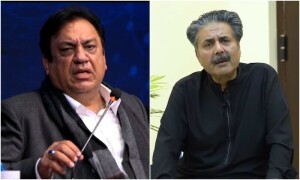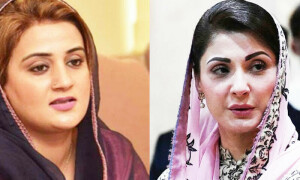ISLAMABAD, Jan 21: The Supreme Court on Monday asked the State Bank of Pakistan (SBP) to report in two weeks details of a scheme it allegedly approved in October 2002 for writing off loans of Rs54 billion owed to commercial banks by business concerns run by some top politicians and other people.
A three-member bench comprising Justice Muhammad Nawaz Abbasi, Justice Muhammad Qaim Jan Khan, Justice Mian Hamid Farooq had taken suo motu action on a report appearing in a section of the press regarding SBP’s approval of a scheme to quietly write off a total of Rs54 billion bank loans.
Since nobody appeared on Monday despite a notice, the apex court directed the SBP and the chief editor of the newspaper to submit reports about the news item in a fortnight. The case will be taken up again on a date to be fixed later.
Based on a secret report to the Public Accounts Committee (PAC) of the National Assembly, the newspaper reported that 50,000 people including politicians, civil and military business concerns and business tycoons of Karachi, Lahore and other cities had been favoured through the scheme and their outstanding loans had been written off in 2002.
The report had accused the then chief ministers of two provinces as being beneficiaries of the scheme because their families having big business concerns like sugar mills and ghee mills also got a waiver on outstanding loans. Even some foreign firms and multinational companies and a private bus service operating from Lahore to different cities of Punjab were also extended this facility.
Soon after October 2002 elections, the news item pointed out, the then finance minister Shaukat Aziz and his financial team at the SBP approved the loan write-off scheme having yielded to the pressure from certain top politicians of the then ruling party.
Instead of launching an effective campaign for the recovery of non- performing loans (NPL), it said, the SBP issued an incentive scheme to the banks/DFIs in October 2002 for waiving the NPL of the organisations showing ‘loss’ for three years or more after dividing them in three categories. Category A included NPL up to Rs0.5 million, category B NPLs ranging from Rs0.5 million to Rs2.5 million and category C loan of more than Rs2.5 million.
The politicians and the big business concerns exploited the third category to get billions of rupees outstanding against them written off .
Shockingly, the report said, the banks/DFIs were asked to recover maximum possible amount to settle loans falling under categories B and C through forced sale of available assets. The purpose of the scheme was to clean the balance sheets owned by banks/DFIs.














































Dear visitor, the comments section is undergoing an overhaul and will return soon.